PREPARING VEGAN RECIPES Some of the recipes in this book are vegan and are marked by a

. Many others can be made vegan by replacing a few ingredients.
| VEGETARIAN | VEGAN |
| Butter | Vegan margarine |
| Milk | Soy milk |
| Cream | Soy cream |
| Yogurt | Soy yogurt |
| Cream cheese | Vegan cream cheese |
| Goat cheese | Vegan goat cheese |
| Feta cheese | Soy cheese |
| Honey | Maple syrup |
Some wines or other alcoholic drinks are made with animal products such as gelatin, but vegan alternatives are often available. Check the ingredients with the manufacturers. CONTENTS

ENJOYING THE OUTDOORS Vegetarian grilling? When we told our friends and family about our new book project, we received the most varied reactionsfrom compassionate, taunting laughter (from the men) to complete enthusiasm because the monotony of grilling was about to come to an end (from the women). The latter was really our inspiration for this book.
As recipe creators, we are fairly critical about the traditional, archaic style of preparing food over an open fire. No matter which garden, park, or beach one is invited in the summer or even during colder temperatures, the grill is always there. In the worst case scenario, that means consuming sausage or pork cutlets doused in store-bought sauce several times a week, or if you are a vegetarian, being content with a foil-baked potato or possibly a piece of dry, grilled Feta cheese. Too often, we find ourselves politely declining the offerings from the grill and instead resigning ourselves to the salads, breads, and dips (which should ideally only provide an attractive background for the main courses). After experiencing such events, our enthusiasm for this truly beautiful form of collective cooking and eating was markedly dampened. And we asked ourselves whether anything could be done about this, other than a complete denial of grilling.
Together, we began to dream of colorful vegetable skewers, delicately grilled vegetable chunks, and fragrantly painted fruits. Since it was clear from the moment we started brainstorming that we werent interested in meat or fish, the idea was bornwe would create vegetarian grilling recipes! We were inspired by cooking styles from all over the world. We skewered, wrapped, and rolled up in our recipes much more than the typical selection from the grocery store or the cheese shop. Many meatless delights for the palate came to our Test Grill," seasoned with spicy marinades or homemade spice mixtures. As we tinkered and sampled, we were convinced that we were not writing a womens book. Even our male test eaters allowed the phrase, Huh, almost better than meat! to pass their lips while trying one or another dishand then proceeded to devour it.
Of course, it is your decision whether your grill will be dedicated solely to vegetarian dishes or whether they will instead be featured side by side with an assortment of meats. In any case, we hope that our recipes provide some diversity and new culinary experiences to make your grill gatherings more colorful and enjoyable! KAREN SCHULZ AND MAREN JAHNKE GETTING STARTED INGREDIENTS Quality In cooking, the results depend on the quality of the ingredients. In order that the effort is worth it and eating a pleasure, we try to buy organic produce. It almost always tastes better and richer, contains fewer pollutants, and puts less strain on the environment, which provides us with a clear conscience. It is, of course, best when one knows and trusts the farmer who grows the produce. Fruits and vegetables are at their highest quality when they are in season.
The shorter travel times give them extra freshness and aroma, since they matured in the sunlight instead of in a greenhouse. WHERE DO I BUY? The fun of cooking can begin in your area while buying the ingredients at a well-stocked farmer's market, an organic produce store, a good retail store, or a health food store. While some ingredients for the recipes can be found in a deli, an organic store, or an Asian food store, most can be obtained in a good supermarket. And the Internet is becoming a better and better source, especially for rare foods and spices. HOW DO I PREPARE? When grilling, most of the preparation is moved from the kitchen out into the openideally, you should be able to enjoy the scenery while serenely turning the grill. Nevertheless, some work still must be done in the kitchen; vegetables, tofu, cheese, etc., have to be cleaned, cut, and possibly marinated or stuffed.
Many ingredients can be prepared beforehand and stored in a refrigerator or a cooler. Do read the recipes well in advance so you will have a general idea of what needs to be done and to ward off stress and panic because you did not factor in the time for marinating, for example. Yeast mixtures for the breads may be prepared in advance and cooled; the same goes for the other preparatory steps. Potatoes, onions, etc., can be precooked a day in advance. But sauces, marinades, and spice mixtures can be prepared days or even weeks in advance and stored in a closed, secure space. Add dressing to salads with delicate greens right before serving so they do not become soggy.
MARINATING HOW LONG? The times given in our marinade recipes refer to minimum marinating times. Soy products, cheeses, and robust vegetables and fruits that do not change color after being cut will not suffer from a longer marinade than statedin fact, the taste will often improve. This can turn the preparation into an even more relaxed process since you can begin it earlier. If some of the ingredients in a marinade recipe give you pause (for example, if you are cautious about chili peppers or garlic), you can use shorter marinating times or add these ingredients later. VEGETABLES ON THE GRILL: WHATS DIFFERENT? Vegetarian ingredients almost always contain less fat. This is very important to know when preparing them on the grill, since the vegetable ingredients may dry out or even burn if they are not marinated or brushed with olive oil or another vegetable oil.
Even seitan and tofu, whether pure, cured, or in sausage form, should be watched closely while grilling. Both consist mainly of protein, which means you need a little know-how and patience to grill them correctly to crispiness. The best thing to do is to start with one or two recipes with these ingredients and combine them with uncomplicated vegetable variations. And be heavy on the brush when cooking protein-heavy foods so that they do not dry out. PLANNING GROUPS It is difficult to give advice for planning a barbecue or a party with many guests. Not even hosts who know the guests can say for certain how hungry they will be on the big day, but it is good to keep in mind that men generally eat more grilled food than women, who prefer salads and appetizers.
In planning a barbecue, be sure to offer several dishes from this bookeven men find a vegetable skewer, stuffed portabella mushrooms, or a grilled panini beguiling and will choose to partake. Factor in a number of recipes with filling, nourishing ingredients containing cheese or soy products, potatoes, or bread. Each guest should be served at least one portion, and preferably one to two additional portions heavy on vegetables or fruit. In addition, have sufficient dips and salads containing satisfying ingredients such as noodles, lentils, and beans to fill out even light vegetable dishes perfectly. And, of course, dont forget the breadwhether its cooked on the grill or bought from a store. 

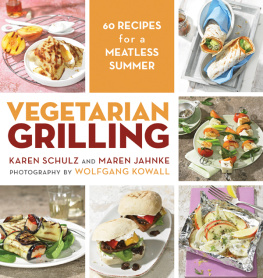

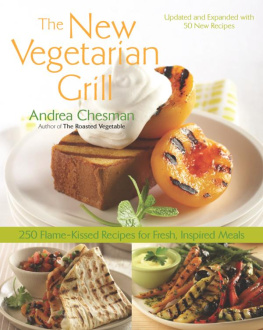

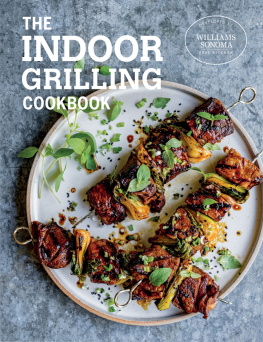


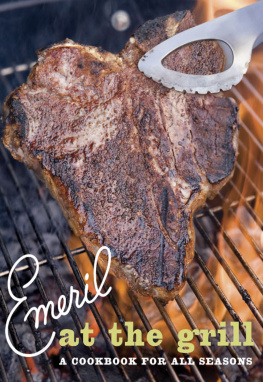
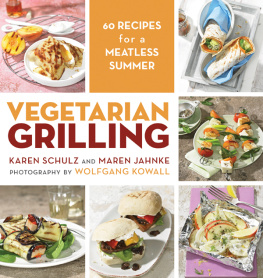
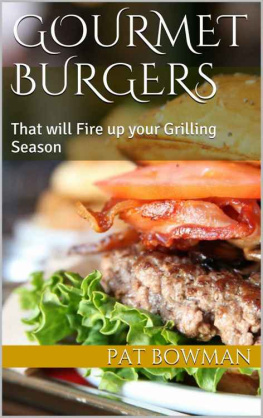


 . Many others can be made vegan by replacing a few ingredients.
. Many others can be made vegan by replacing a few ingredients.  ENJOYING THE OUTDOORS Vegetarian grilling? When we told our friends and family about our new book project, we received the most varied reactionsfrom compassionate, taunting laughter (from the men) to complete enthusiasm because the monotony of grilling was about to come to an end (from the women). The latter was really our inspiration for this book.
ENJOYING THE OUTDOORS Vegetarian grilling? When we told our friends and family about our new book project, we received the most varied reactionsfrom compassionate, taunting laughter (from the men) to complete enthusiasm because the monotony of grilling was about to come to an end (from the women). The latter was really our inspiration for this book. 